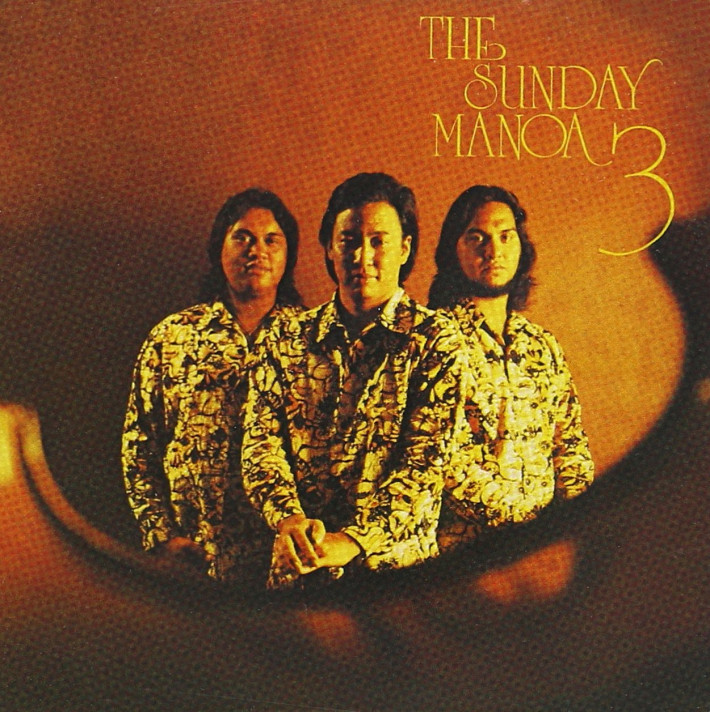As we continue to celebrate the Song Contest and song festivals held by our kula this spring, we remember fondly the mele that have connections to our graduates. This year’s hōʻike during the Kapālama Song Contest celebration featured Robert Uluwehi Cazimero KSK ’67 as a special guest, honoring his contributions to Hawaiian music. In this Kūkahekahe, KS Cultural Consultant Manu Boyd KSK ’80 shares ʻike relating to Cazimero’s rendition of the 1888 mele “Ua Like nō a Like” by composer Alice Everett.
If you know the Moku o Keawe (Hawai‘i island) district of Hilo, you likely have experienced its seemingly constant rain, described poetically as “Lehua-rustling,” Kanilehua. The gorgeous 1888 composition by haku mele (composer) Alice Everett, “Ua Like nō a Like” calls out Hilo’s Kanilehua rain in the second line of the first verse. But I think this classic Hawaiian mele has little to do with Hilo. It is a metaphor for constancy.
“Constancy” is an alternate English title of this song in some versions. It suggests dependability, faithfulness, and an intimate, loving pilina (relationship) that will likely endure. Like the rain of Hilo, perhaps the intimate midnight companion described here in high-level Hawaiian poetic savvy possesses those Hilo rain-like characteristics that are remembered, admired, and adored in this well-known mele, penned nearly 135 years ago. Its flow and depth is much like the mele of Lili‘uokalani, a contemporary of Everett.
Performed for decades by Kamehameha Schools haumāna, it was a 1973 recording of “Ua Like nō a Like” by The Sunday Mānoa that seemed to breathe new life into this old song – at the height of the Hawaiian cultural renaissance – with the magical sounds of a male chorus ensemble from the Kamehameha Concert Glee Club.
Robert Cazimero, who has risen to legendary status as a composer, arranger, entertainer, recording artist, and kumu hula, welcomes us to partake in his personal journey where the seeds of musical creativity were sown more than a half century ago.
“In 1969, Peter Moon asked Roland KS ’68 and I to be a part of The Sunday Mānoa,” Cazimero said. (An earlier iteration of the influential Hawaiian ensemble had included Palani Vaughan, and sons of Hawaiian music icon, Gabby Pahinui.) “He started kani ka pila at UH Mānoa’s Andrew’s Amphitheatre. I asked KS music director Dale Noble for permission to include the KS Concert Glee Club in our performance. A match, astonishing – a divine perfection for me. I chose ‘Ua Like nō a Like.’ It was a simple arrangement, one of my very first. I had them start on one note, then gently open up to a full chorus. I had no idea it would lead to many more arrangements, concerts and opportunities.
“Because of amazing influences like Dale Noble, Aunty Leila Hohu Kīʻaha KSK ’44, Nona Beamer and Bob Springer, I was always a part of the music scene at Kamehameha. The men’s Concert Glee Club room was like a second home to us. Arrangements by Auntie Martha Poepoe Hohu and of course Dorothy Kahananui Gillett were staples and influences on me, big time,” recalls Cazimero.
“Ua Like nō a Like” was performed by the class of 1944 for Song Contest, and it was likely taught to them by revered music instructor Laura E. Brown. This is according to Dr. Ione Jean ‘Alohilani Rathburn Ryan, whose classmates also included Leila Hohu Kīʻaha and my mother, Marian Kekaulike Lake Boyd.
“ʻO ‘oe nō kaʻu i ʻupu ai, kuʻu lei hiki ahiahi. ‘O ke kani a nā manu i nā hola o ke aumoe.” (You are mine to fondly recall, my beloved who came to me at nightfall. The singing of the birds at the midnight hour.) Like the constant lehua-rustling rain of Hilo, so too, the lasting influence and inspiration of the 1888 masterpiece by haku mele Alice Everett.
Ua Like nō a Like/Constancy
Alice Everett, 1888
Ua like nō a like
Me ka ua Kanilehua
Me he ala e ‘ī mai ana
Aia i laila ke aloha
(Aia ke ʻala i ka nahele)
Ma ‘aneʻi mai kāua
He welina paʻa i ka poli (piko)
A nāu nō au e ‘imi aʻe
A loaʻa i ke aheahe a ka makani
He moani kaʻu i honi
‘Oiai eia i ka midnight
Me nā kipona waianuhea
Ka māʻalo aʻe i kuʻu maka
‘O ‘oe nō kaʻu i ‘upu ai
Kuʻu lei hiki ahiahi
‘O ke kani a nā manu
I nā hola o ke aumoe
Just like
The Kanilehua rain of Hilo
As if to say
With you, there, is where love dwells
Come close to me
An invitation held fast in my heart
You are mine to seek and follow
Until love is realized in the gentle zephyrs
A wind-borne fragrance is breathed in
As the midnight hour arrives
Intense passion
Passes before my eager eyes
You are mine to fondly recall
My beloved who arrived at nightfall
Birds serenaded passionately
At midnight
Alternate line four of verse one: “Aia ke ʻala i ka nahele” Liliʻu 1886 Pālolo
Published English titles of “Ua Like no a Like:”
“Constancy”
“My Heartʻs Choice (King)”
“Sweet Constancy”
“Hawaiian Novelty”
To listen to the Sunday Mānoa version of “Ua Like Nō a Like,” visit this YouTube page.

The cover of The Sunday Mānoa 3 album, which features the mele “Ua Like nō a Like” sung by the Sunday Mānoa and the men of the Kamehameha Schools Concert Glee Club.
TAGS
kūkahekahe,
manu boyd,
robert cazimero
CATEGORIES
Kaipuolono Article, Regions, Themes, Culture, Community, Hawaii Newsroom, KS Hawaii Home, Kapalama Newsroom, Kapalama Home, Maui Newsroom, KS Maui Home, Newsroom, Campus Programs, Hawaii, Kapalama, Maui, Alumni, Oahu, Hawaii campus, Kapalama campus, Maui campus
Print with photos
Print text only










